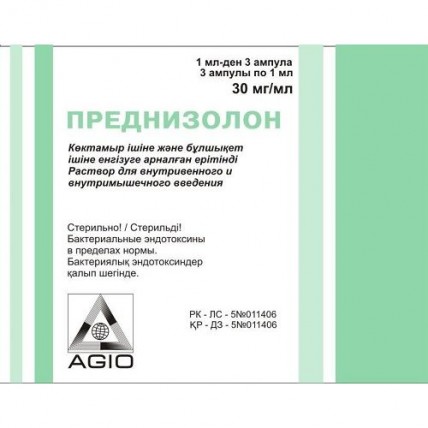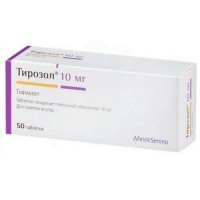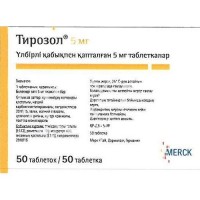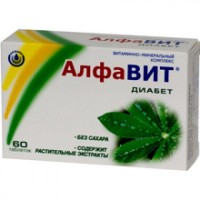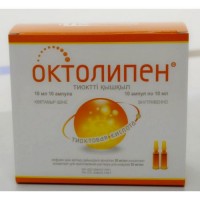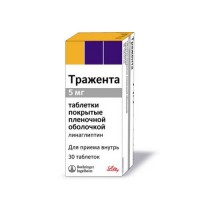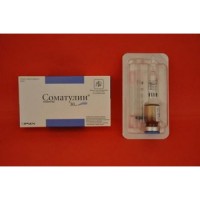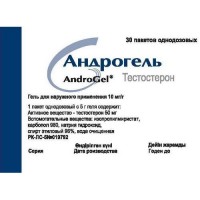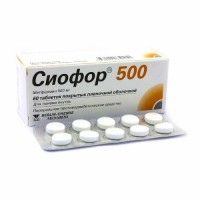Prednisolone 30 mg / ml 1ml 3's solution for injection in ampoules intravenously and intramuscularly.
- $11.00
The instruction for use
of medicine for experts
PREDNISOLONUM
the Trade name
Prednisolonum
the International unlicensed
name Prednisolonum Dosage Form Solution for intravenous and intramuscular administration of 30 mg/ml
Structure
of 1 ml of solution contains
active agent sodium Prednisolonum the phosphate equivalent of Prednisolonum to phosphate - 30 mg,
excipients: dinatrium edetat, sodium hydrophosphate, sodium dihydrophosphate a dihydrate, propylene glycol, water for injections.
The description
Transparent solution, colourless or with a chartreuse shade
Pharmacotherapeutic group
Corticosteroids for system use.
Glucocorticosteroids.
Prednisolonum
ATH H02AB06 Code
the Pharmacological
Pharmacokinetics To properties of 90% of drug contacts proteins of blood plasma: transcortinum (kortizolsvyazyvayushchy globulin) and albumine. Prednisolonum is metabolized in a liver, partially in kidneys and other fabrics, generally by conjugation with glucuronic and sulfuric acids. Metabolites are inactive. It is removed with bile and urine by glomerular filtration and for 80-90% it reabsorbirutsya by renal tubules. 20% of a dose are removed by kidneys in not changed look. Plasma elimination half-life of blood after intravenous administration 2-3 hours.
A pharmacodynamics
Prednisolonum - synthetic glucocorticoid drug, the dehydrogenated hydrocortisone analog. Has anti-inflammatory, antiallergic and immunodepressive effect, increases sensitivity of beta adrenoceptors to endogenous catecholamines.
Interacts with specific cytoplasmatic receptors (receptors for glucocorticosteroids (GKS) are in all fabrics, especially their is a lot of in a liver) with formation of the complex inducing formation of proteins (including the enzymes regulating the vital processes in cells).
The anti-inflammatory effect is connected with release oppression by eosinophils and mast cells of mediators of inflammation, induction of formation of lipokortin and reduction of quantity of the mast cells producing hyaluronic acid with reduction of permeability of capillaries, stabilization of cellular membranes (especially lizosomalny) and membranes of organellas. Affects all stages of inflammatory process: inhibits synthesis of prostaglandins (Pg) at the level of arachidonic acid (lipokortin oppresses A2 phospholipase, suppresses a liberation of arachidonic acid and inhibits biosynthesis of endoperoxides, the leukotrienes promoting processes of inflammation, an allergy, etc.), synthesis of pro-inflammatory cytokines (interleukin 1, tumor necrosis factor an alpha, etc.) increases resistance of a cellular membrane to action of various disturbing factors.
Protein metabolism: reduces amount of globulins in blood plasma, increases synthesis of albumine in a liver and kidneys (with increase in coefficient albumine/globulin), reduces synthesis and strengthens catabolism of protein in muscle tissue.
Lipidic exchange: increases synthesis of higher fatty acids and triglycerides, redistributes fat (accumulation of fat happens mainly in the field of a shoulder girdle, a face, a stomach), leads ment of a hypercholesterolemia.
Carbohydrate metabolism: increases absorption of carbohydrates from digestive tract, increases activity of glyukozo-6-phosphatase (increase in intake of glucose from a liver in blood), increases activity of a fosfoenolpiruvatkarboksilaza and synthesis of aminotransferases (activation of a gluconeogenesis), contributes to the development of a hyperglycemia.
Water eletrolitny exchange: Na + and water in an organism detains, stimulates removal of K+ (mineralokortikoidny activity), reduces absorption of Sa2 + from digestive tract, causes washing away of calcium from bones and increase in its renal excretion, reduces a mineralization of a bone tissue.
The immunosuppressive effect is caused the adenoid tissue caused by involution, oppression of proliferation of lymphocytes (especially T lymphocytes), suppression of migration of V-cells and interactions of T - and V-lymphocytes, slowing down of release of cytokines (interleukin-1, 2, gamma interferon) from lymphocytes and macrophages and decrease in antibody formation.
The antiallergic effect develops as a result of decrease in synthesis and secretion of mediators of an allergy, slowing down of release from sensitized mast cells and basophiles of a histamine, etc. biologically active agents, reduction of number of the circulating basophiles, suppression of development of adenoid and connective tissue, reduction of number of T - and V-lymphocytes, mast cells, decrease in sensitivity of effector cells to mediators of an allergy, oppression of antibodyformation, change of the immune response of an organism.
In obstructive respiratory diseases the action is caused, mainly, by slowing down of inflammatory processes, prevention or reduction of severity of hypostasis of mucous membranes, decrease in eosinophilic infiltration of a submucosal layer of an epithelium of bronchial tubes and adjournment in mucous bronchial tubes of the circulating cell-bound immune complexes and also braking of an erozirovaniye and desquamation mucous. Increases sensitivity of beta adrenoceptors of bronchial tubes of small and average caliber to endogenous catecholamines and exogenous sympathomimetics, reduces viscosity of slime due to reduction of its products. Suppresses synthesis and secretion of adrenocorticotropic hormone and again - synthesis of endogenous GKS. Slows down connective tissue reactions during inflammatory process and reduces a possibility of formation of cicatricial fabric.
Indications
the Urgentny states demanding fast increase in concentration of glucocorticosteroids in an organism:
- shock states (burn, traumatic, operational, toxic) - at inefficiency of vasoconstrictors, plasma substituting drugs and other symptomatic therapy
- allergic reactions (acute severe forms), hemotransfusionic shock, an acute anaphylaxis, anaphylactoid reactions
- wet brain (including against the background of a tumor of a brain or connected with surgical intervention, radiation therapy or an injury of the head)
- bronchial asthma (severe form), the asthmatic status
- general diseases of connective tissue (system lupus erythematosus, a pseudorheumatism)
- acute adrenal insufficiency
- thyrocardiac crisis
- an acute hepatitis, a hepatic coma
- reduction of the inflammatory phenomena and prevention of cicatricial narrowings (in poisoning with acids and alkalis).
The route of administration and doses
the Dose of drug and duration of treatment is established by the doctor individually depending on indications and disease severity. Prednisolonum is entered intravenously (by drop infusion or struyno) or intramusculary. Intravenously the drug is usually administered at first struyno, then by drop infusion.
At acute insufficiency of adrenal glands the single dose of drug makes 100 - 200 mg, daily 300-400 mg.
At heavy allergic reactions Prednisolonum enter in a daily dose 100-200 mg within 3-16 days.
In bronchial asthma the drug is administered depending on disease severity and efficiency of complex treatment from 75 to 675 mg on a course of treatment from 3 to 16 days, in hard cases the dose can be raised to 1400 mg on a course of treatment and more with a gradual dose decline.
At the asthmatic status Prednisolonum enter in a dose 500-1200 mg a day with the subsequent decrease to 300 mg a day and transition to maintenance doses.
In thyrocardiac crisis enter on 100 mg of drug in a daily dose 200-300 mg, if necessary the daily dose can be increased up to 1000 mg. Duration of use depends on therapeutic effect, usually up to 6 days.
At the shock resistant to standard therapy, Prednisolonum at the beginning of therapy is usually entered struyno then pass to drop introduction. If within 10-20 minutes the arterial blood pressure does not increase, repeat jet administration of drug.
The single dose makes 50-150 mg (in hard cases - to 400 mg). Repeatedly the drug is administered in 3-4 hours. After removal from a state of shock continue drop introduction before stabilization of arterial blood pressure. The daily dose can make 300-1200 mg (with the subsequent dose decline).
At acute hepatonephric insufficiency (in acute poisonings, in the postoperative and postnatal periods, etc.), Prednisolonum is entered on 25-75 mg a day, in the presence of indications the daily dose can be increased up to 300-1500 mg a day and above.
In a pseudorheumatism and a system lupus erythematosus Prednisolonum no more than 7-10 days enter in addition to system administration of drug in a dose 75 - 125 mg a day.
In an acute hepatitis Prednisolonum is entered on 75-100 mg a day within 7-10 days.
In poisonings with acids and alkalis with burns of a digestive tract and upper airways Prednisolonum appoint in a dose 75-400 mg a day within 3-18 days.
At impossibility of intravenous administration, Prednisolonum is entered intramusculary in the same doses. After stopping of acute condition appoint inside Prednisolonum in tablets, with the subsequent gradual reduction of a dose. At long administration of drug the daily dose should be reduced gradually. Long therapy cannot be stopped suddenly!
To children from 2 to 12 months - 2-3 mg/kg/days, from 1 to 14 years - 1-2мг/кг/сут, in oil, in/in enter slowly (within 3 min.). If necessary, this dose can be repeated in 20-30 min.
Side effects
Very often (& gt, 1/10), it is frequent (& gt, 1/100, & lt, 1/10), infrequently (& gt, 1/1000, & lt, 1/100), is rare (& gt, 1/10000, & lt, 1/1000), is very rare (& lt, 1/10000.
Generally, the frequency of development of the predicted undesirable effects, including system suppression a hypothalamus-hypophyses-adrenal glands, depends on a dose, time of appointment and duration of treatment. Undesirable effects can be minimized by use of the lowest effective dose during, as far as possible, minimum period.
Very often
- the increased susceptibility to an infection, aggravation of the available infection, activation of latent infection and masking of symptoms of an infection owing to immunosuppressor and anti-inflammatory effect of Prednisolonum
- decrease in quantity of eosinophils and lymphocytes
- the immunosuppressor and anti-inflammatory effect leading to masking or aggravation of the existing disease
- the insufficiency of adrenal glands (which is beginning with inhibition of a hypothalamus and coming to the end with a true atrophy of bark of adrenal glands) at prolonged oral administration of Prednisolonum, a withdrawal owing to insufficiency of adrenal glands (a headache, nausea, dizziness, anorexia, weakness, changes of an emotional state, apathy and inadequate reaction to stressful situations, steroid diabetes with low sensitivity to insulin, increase in level of sugar of blood at the patients who already have diabetes (100%). A growth inhibition at children as a result of disturbance of secretion of growth hormone and decrease in sensitivity to growth hormone
- increase in intraocular pressure (up to 40% of the patients receiving treatment by oral drug), cataracts at 30% of patients at long-term treatment by drug orally.
- lung abscess at the patients having lung cancer (12%).
- osteoporosis with such symptoms as a dorsodynia, decrease in mobility, an acute pain, compression fractures of vertebras and decrease in height of vertebrae, fractures of long bones (25% at long-term treatment by drug for intake, see Section 4.4). A myopathy (10%) at treatment by high doses.
Often
- increase in quantity of leukocytes and thrombocytes
- Cushing's Syndrome, including change of an adiposity (crescent-shaped face, the central obesity, a bull hump) at long purpose of oral doses above physiological (usually more than 50 mg a day), a hypopotassemia owing to deduction of sodium instead of potassium, an amenorrhea at women of childbearing age, increase in level of cholesterol, triglycerides and lipoproteins at treatment by the high doses accepted inside
- euphoria, a depression, the psychosis induced by corticosteroids
- hypertensia (owing to sodium deduction that leads to liquid deduction), aggravation of stagnant heart failure (as a result of sodium deduction)
- the increased risk of developing tuberculosis
- candidiasis of an oral cavity, strengthening of symptoms in colitis, an ileitis, a diverticulitis
- a fungal infection of mucous membranes, extensions, acneform rash, formation of bruises, dermatitis, an ecchymoma, an erythema of the person, an atrophy, a hirsutism, slow healing of wounds, the increased sweating, teleangiectasias and thinning of skin, masking or deterioration in the available skin diseases.
- the night polyuria
Infrequently
- allergic reactions
- diabetes (& lt, 1%) at treatment by small doses orally, increase in level of cholesterol, triglycerides and lipoproteins at treatment by low doses orally
- insomnia, mood swings, changes of the personality, a maniacal syndrome and hallucinations
- a myopathy of respiratory muscles
- stomach ulcers or ulcers of a colon, gastrointestinal hemorrhages (0.5%), perforation of a stomach, intestines
- aseptic necrosis of a bone tissue
- urinary stones owing to the increased excretion of calcium and phosphate, disturbance of secretion of sex hormones (disturbance of periods, a hirsutism, impotence), a vasculitis
Seldom
- risk of thrombosis owing to fibrillation
- change of function of a thyroid gland
- in cerebral malaria coma can last, weak-mindedness.
- high risk of destruction of a cornea of an eye in a simultaneous gerpesny infection of eyes (in view of masking of this infection), glaucoma (long-term treatment by drug orally).
Very seldom
- ketoacidosis and a giperosmolyarny coma, manifestation of a latent hyperparathyreosis, acceleration of development of a porphyria
- a syndrome of lysis of a tumor
- manifestation of latent epilepsy, a brain pseudoneoplasm (benign intracranial hypertensia with such symptoms as a headache, not clear sight and disorders of vision)
- an exophthalmos (after long oral drug treatment)
- a cardiomyopathy with increase in risk of decrease in minute volume of heart, arrhythmia owing to a hypopotassemia
- pancreatitis after long-term treatment by high doses
- an epidermal necrolysis, a syndrome
Stephen-Johnson Protivopokazaniya
For short-term use according to vital indications the only contraindication is hypersensitivity to Prednisolonum or components of drug.
At children during a growth period of GKS have to be applied only according to absolute indications and under especially careful observation of the attending physician.
With care it is necessary to appoint drug in the following diseases and states:
- a peptic ulcer of a stomach and duodenum, an esophagitis, gastritis, an acute or latent round ulcer, recently created intestines anastomosis, nonspecific ulcer colitis with threat of perforation or abscessing, a diverticulitis, chronic hepatitis with HbsAg positive reaction
- the parasitic and infectious diseases of the virus, fungal or bacterial nature (proceeding now or which are recently postponed including recent contact with the patient) - the herpes simplex surrounding herpes (viremichesky phase), chicken pox, measles, an amebiasis, a strongyloidosis, system mycosis, active and latent tuberculosis. Use in serious infectious diseases is admissible only against the background of specific therapy
- pre- and the vaccine-challenged period (8 weeks to and 2 weeks after vaccination), lymphadenitis after BCZh inoculation, immunodeficiency (including AIDS or HIV infection)
- recently postponed myocardial infarction (at patients with an acute and subacute myocardial infarction the distribution of the center of necrosis, delay of forming of cicatricial fabric and thereof - a rupture of a cardiac muscle), heavy chronic heart failure, arterial hypertension, a lipidemia
- diabetes (including disturbance of tolerance to carbohydrates), a thyrotoxicosis, a hypothyroidism, Itsenko-Cushing's disease, obesity (III-IVst)
- a heavy chronic renal and/or liver failure, nefrourolitiaz
- the hypoalbuminemia and states contributing to its emergence
- system osteoporosis, gravis myasthenia
- acute psychosis, poliomyelitis (except for a form of bulbar encephalitis is possible)
- open and closed-angle glaucoma
- pregnancy
- lymphadenitis after BCZh inoculation
Medicinal interactions
Is possible pharmaceutical incompatibility of Prednisolonum with other intravenously administered drugs - it is recommended to be entered separately from other drugs (in/in bolyusno, or through other dropper as the second solution). At Prednisolonum solution mixing with heparin the deposit is formed.
Co-administration of Prednisolonum with:
- inductors of liver microsomal enzymes (phenobarbital, Phenytoinum, theophylline, rifampicin, ephedrine) leads to decrease in its concentration.
- diuretics (especially thiazide and inhibitors of a karboangidraza) and Amphotericinum B can lead to strengthening of removal from K+ organism, with natriysoderzhashchy drugs - hypostases and increase in arterial blood pressure.
- Amphotericinum B risk of developing heart failure increases.
- cardiac glycosides their shipping worsens and the likelihood of developing ventricular premature ventricular contraction raises (because of the caused hypopotassemia).
- indirect anticoagulants weakens (strengthens) their action less often (it is required to dose adjustment).
- anticoagulants and fibrinolitika risk of developing bleedings from ulcers in digestive tract increases.
- ethanol and non-steroidal anti-inflammatory drugs (NPVP) the risk of developing of erosive cankers in digestive tract and development of bleedings (in a combination with NPVP at treatment of arthritises the dose decline of glucocorticosteroids because of summation of therapeutic effect is possible) amplifies.
- paracetamol risk of development of hepatotoxicity (induction of liver enzymes and formation of a toxic metabolite of paracetamol) increases.
- acetylsalicylic acid accelerates its removal and reduces concentration in blood (at Prednisolonum cancellation the level of salicylates in blood increases and risk of development of by-effects increases).
- insulin and oral hypoglycemic drugs, antihypertensives their efficiency decreases.
- vitamin D its influence on absorption of Sa2 + in intestines decreases. - somatotropic hormone, reduces efficiency of the last, and with prazikvantely - its concentration.
- M-holinoblokatorami (including antihistaminic drugs and tricyclic antidepressants) and nitrates promotes increase in intraocular pressure.
- an isoniazid and mekselitiny increases their metabolism (especially at slow atsetilator) that leads to decrease in their plasma concentration. Inhibitors of a karboangidraza and loopback diuretics can increase risk of developing osteoporosis.
- indometacin, forcing out Prednisolonum from communication with albumine, increases risk of development of its side effects.
- AKTG strengthens effect of Prednisolonum.
- ergocalciferol and parathormone interfere with development of the osteopathy caused by Prednisolonum.
- cyclosporine and ketokonazol, slowing down Prednisolonum metabolism, can increase its toxicity in some cases.
- co-administration of androgens and steroid anabolic drugs with Prednisolonum contributes to the development of peripheral hypostases and a hirsutism, appearance of eels.
- are oestrogenic and oral estrogensoderzhashchy contraceptives reduce clearance of Prednisolonum that can be followed by strengthening of expressiveness of its action.
- Mitotanum and other inhibitors of function of bark of adrenal glands can cause need of increase in a dose of Prednisolonum.
- at simultaneous use with live antiviral vaccines and against the background of other types of immunization increases risk of activation of viruses and development of infections.
- antipsychotic means (neuroleptics) and Azathioprinum increase risk of developing a cataract when prescribing Prednisolonum.
- at simultaneous use with anti-thyroid drugs decreases, and with thyroid hormones - the clearance of Prednisolonum increases.
Special instructions
Before an initiation of treatment (at impossibility because of a state urgentnost - in the course of treatment) the patient has to be examined regarding identification of possible contraindications. Clinical inspection has to include a research of a cardiovascular system, X-ray inspection of lungs, a research of a stomach and duodenum, the system of urination, organs of sight, control of a blood count, content of glucose and electrolytes in blood plasma.
During treatment by Prednisolonum (especially long) observation of the oculist, control of arterial blood pressure, a condition of water and electrolytic balance and also a picture of peripheral blood and level of glucose of blood is necessary.
For the purpose of reduction of by-effects it is necessary to increase receipt of K+ in an organism (diet, potassium drugs). Food has to be protein-rich, vitamins, with restriction of content of fats, carbohydrates and table salt.
Effect of drug amplifies at patients with a hypothyroidism and cirrhosis.
Drug can enhance the existing emotional instability or psychotic disturbances. At the instruction to psychoses in the anamnesis Prednisolonum in high doses is appointed under stringent control of the doctor.
In stressful situations during the supporting treatment (for example, surgeries, an injury or infectious diseases) it is necessary to carry out dose adjustment of drug in connection with increase in need for glucocorticosteroids. At sudden cancellation, especially in case of the previous use of high doses, development of a withdrawal (anorexia, nausea, block, generalized musculoskeletal pains, the general weakness) and also exacerbation of a disease concerning which Prednisolonum was appointed is possible.
During treatment it is not necessary to carry out by Prednisolonum vaccination in connection with decrease in its efficiency (immune response).
Appointing Prednisolonum in intercurrent infections, septic states and tuberculosis, it is necessary to carry out treatment by antibiotics of bactericidal action at the same time.
At patients with diabetes it is necessary to control the content of glucose of blood and if necessary to korrigirovat therapy.
Radiological control of a bone and articulate system (pictures of a backbone, a brush) is shown.
With latent infectious diseases of kidneys and urinary tract Prednisolonum is capable to cause a leukocyturia in patients that can have diagnostic value.
Prednisolonum increases the maintenance of metabolites of 11 and 17-oxyketocorticosteroids.
Use in pediatrics
For children during long-term treatment by Prednisolonum is necessary careful observation of dynamics of growth and development. To children who during treatment were in contact with patients with measles or chicken pox preventively appoint specific immunoglobulins.
Owing to weak mineralokortikoidny effect for replacement therapy at adrenal insufficiency Prednisolonum is used in a combination from mineralokortikoida.
Pregnancy and the period of a lactation
At pregnancy (especially in the I trimester) apply only according to vital indications.
At long therapy during pregnancy the possibility of a growth disorder of a fruit is not excluded. In case of use in the III trimester of pregnancy there is a danger of emergence of an atrophy of bark of adrenal glands at a fruit that can demand performing replacement therapy from the newborn.
Features of influence of medicine on ability to run the vehicle or potentially dangerous mechanisms
Drug does not affect ability to drive the car and to work with the equipment.
Overdose
Symptoms: strengthening of the by-effects described above is possible.
Treatment: it is necessary to reduce Prednisolonum dose.
Symptomatic therapy.
The form of release and packing
On 1 ml of drug place in an ampoule from dark glass.
On 3 ampoules place in a plastic tray or in blister strip packaging from a foil of an aluminum and transparent film from PVC.
The plastic tray or blister strip packaging together with the instruction for medical use in the state and Russian languages place in a cardboard box.
To Store storage conditions in the place protected from light at a temperature not higher than 250 Pages.
Not to freeze!
To store out of children's reach!
2 years
not to apply a period of storage after expiry date.
Prescription status
According to the prescription
of Proizvoditel Adzhio Pharmatsevtikalz Ltd
of A38, Nandizhiot Indastrial Estayt, Safedpool, Kurla-Andheri Road, Mumbai -
400 072 Ph. +91-22-28518206/42319000
Fax: +91-22-28518204
regulatory@agio-pharma.com
the Owner of the registration certificate
of Adzhio Pharmatsevtikalz Ltd
the Address of the organization accepting in the territory of the Republic of Kazakhstan claims from consumers on quality of products:
Almaty, Shevchenko St., 118, office 228
ph. +7 (727) 2240402 regulatory@agio-pharma.com
representative office of Adzhio Pharmatsevtikalz Limited
of medicine for experts
PREDNISOLONUM
the Trade name
Prednisolonum
the International unlicensed
name Prednisolonum Dosage Form Solution for intravenous and intramuscular administration of 30 mg/ml
Structure
of 1 ml of solution contains
active agent sodium Prednisolonum the phosphate equivalent of Prednisolonum to phosphate - 30 mg,
excipients: dinatrium edetat, sodium hydrophosphate, sodium dihydrophosphate a dihydrate, propylene glycol, water for injections.
The description
Transparent solution, colourless or with a chartreuse shade
Pharmacotherapeutic group
Corticosteroids for system use.
Glucocorticosteroids.
Prednisolonum
ATH H02AB06 Code
the Pharmacological
Pharmacokinetics To properties of 90% of drug contacts proteins of blood plasma: transcortinum (kortizolsvyazyvayushchy globulin) and albumine. Prednisolonum is metabolized in a liver, partially in kidneys and other fabrics, generally by conjugation with glucuronic and sulfuric acids. Metabolites are inactive. It is removed with bile and urine by glomerular filtration and for 80-90% it reabsorbirutsya by renal tubules. 20% of a dose are removed by kidneys in not changed look. Plasma elimination half-life of blood after intravenous administration 2-3 hours.
A pharmacodynamics
Prednisolonum - synthetic glucocorticoid drug, the dehydrogenated hydrocortisone analog. Has anti-inflammatory, antiallergic and immunodepressive effect, increases sensitivity of beta adrenoceptors to endogenous catecholamines.
Interacts with specific cytoplasmatic receptors (receptors for glucocorticosteroids (GKS) are in all fabrics, especially their is a lot of in a liver) with formation of the complex inducing formation of proteins (including the enzymes regulating the vital processes in cells).
The anti-inflammatory effect is connected with release oppression by eosinophils and mast cells of mediators of inflammation, induction of formation of lipokortin and reduction of quantity of the mast cells producing hyaluronic acid with reduction of permeability of capillaries, stabilization of cellular membranes (especially lizosomalny) and membranes of organellas. Affects all stages of inflammatory process: inhibits synthesis of prostaglandins (Pg) at the level of arachidonic acid (lipokortin oppresses A2 phospholipase, suppresses a liberation of arachidonic acid and inhibits biosynthesis of endoperoxides, the leukotrienes promoting processes of inflammation, an allergy, etc.), synthesis of pro-inflammatory cytokines (interleukin 1, tumor necrosis factor an alpha, etc.) increases resistance of a cellular membrane to action of various disturbing factors.
Protein metabolism: reduces amount of globulins in blood plasma, increases synthesis of albumine in a liver and kidneys (with increase in coefficient albumine/globulin), reduces synthesis and strengthens catabolism of protein in muscle tissue.
Lipidic exchange: increases synthesis of higher fatty acids and triglycerides, redistributes fat (accumulation of fat happens mainly in the field of a shoulder girdle, a face, a stomach), leads ment of a hypercholesterolemia.
Carbohydrate metabolism: increases absorption of carbohydrates from digestive tract, increases activity of glyukozo-6-phosphatase (increase in intake of glucose from a liver in blood), increases activity of a fosfoenolpiruvatkarboksilaza and synthesis of aminotransferases (activation of a gluconeogenesis), contributes to the development of a hyperglycemia.
Water eletrolitny exchange: Na + and water in an organism detains, stimulates removal of K+ (mineralokortikoidny activity), reduces absorption of Sa2 + from digestive tract, causes washing away of calcium from bones and increase in its renal excretion, reduces a mineralization of a bone tissue.
The immunosuppressive effect is caused the adenoid tissue caused by involution, oppression of proliferation of lymphocytes (especially T lymphocytes), suppression of migration of V-cells and interactions of T - and V-lymphocytes, slowing down of release of cytokines (interleukin-1, 2, gamma interferon) from lymphocytes and macrophages and decrease in antibody formation.
The antiallergic effect develops as a result of decrease in synthesis and secretion of mediators of an allergy, slowing down of release from sensitized mast cells and basophiles of a histamine, etc. biologically active agents, reduction of number of the circulating basophiles, suppression of development of adenoid and connective tissue, reduction of number of T - and V-lymphocytes, mast cells, decrease in sensitivity of effector cells to mediators of an allergy, oppression of antibodyformation, change of the immune response of an organism.
In obstructive respiratory diseases the action is caused, mainly, by slowing down of inflammatory processes, prevention or reduction of severity of hypostasis of mucous membranes, decrease in eosinophilic infiltration of a submucosal layer of an epithelium of bronchial tubes and adjournment in mucous bronchial tubes of the circulating cell-bound immune complexes and also braking of an erozirovaniye and desquamation mucous. Increases sensitivity of beta adrenoceptors of bronchial tubes of small and average caliber to endogenous catecholamines and exogenous sympathomimetics, reduces viscosity of slime due to reduction of its products. Suppresses synthesis and secretion of adrenocorticotropic hormone and again - synthesis of endogenous GKS. Slows down connective tissue reactions during inflammatory process and reduces a possibility of formation of cicatricial fabric.
Indications
the Urgentny states demanding fast increase in concentration of glucocorticosteroids in an organism:
- shock states (burn, traumatic, operational, toxic) - at inefficiency of vasoconstrictors, plasma substituting drugs and other symptomatic therapy
- allergic reactions (acute severe forms), hemotransfusionic shock, an acute anaphylaxis, anaphylactoid reactions
- wet brain (including against the background of a tumor of a brain or connected with surgical intervention, radiation therapy or an injury of the head)
- bronchial asthma (severe form), the asthmatic status
- general diseases of connective tissue (system lupus erythematosus, a pseudorheumatism)
- acute adrenal insufficiency
- thyrocardiac crisis
- an acute hepatitis, a hepatic coma
- reduction of the inflammatory phenomena and prevention of cicatricial narrowings (in poisoning with acids and alkalis).
The route of administration and doses
the Dose of drug and duration of treatment is established by the doctor individually depending on indications and disease severity. Prednisolonum is entered intravenously (by drop infusion or struyno) or intramusculary. Intravenously the drug is usually administered at first struyno, then by drop infusion.
At acute insufficiency of adrenal glands the single dose of drug makes 100 - 200 mg, daily 300-400 mg.
At heavy allergic reactions Prednisolonum enter in a daily dose 100-200 mg within 3-16 days.
In bronchial asthma the drug is administered depending on disease severity and efficiency of complex treatment from 75 to 675 mg on a course of treatment from 3 to 16 days, in hard cases the dose can be raised to 1400 mg on a course of treatment and more with a gradual dose decline.
At the asthmatic status Prednisolonum enter in a dose 500-1200 mg a day with the subsequent decrease to 300 mg a day and transition to maintenance doses.
In thyrocardiac crisis enter on 100 mg of drug in a daily dose 200-300 mg, if necessary the daily dose can be increased up to 1000 mg. Duration of use depends on therapeutic effect, usually up to 6 days.
At the shock resistant to standard therapy, Prednisolonum at the beginning of therapy is usually entered struyno then pass to drop introduction. If within 10-20 minutes the arterial blood pressure does not increase, repeat jet administration of drug.
The single dose makes 50-150 mg (in hard cases - to 400 mg). Repeatedly the drug is administered in 3-4 hours. After removal from a state of shock continue drop introduction before stabilization of arterial blood pressure. The daily dose can make 300-1200 mg (with the subsequent dose decline).
At acute hepatonephric insufficiency (in acute poisonings, in the postoperative and postnatal periods, etc.), Prednisolonum is entered on 25-75 mg a day, in the presence of indications the daily dose can be increased up to 300-1500 mg a day and above.
In a pseudorheumatism and a system lupus erythematosus Prednisolonum no more than 7-10 days enter in addition to system administration of drug in a dose 75 - 125 mg a day.
In an acute hepatitis Prednisolonum is entered on 75-100 mg a day within 7-10 days.
In poisonings with acids and alkalis with burns of a digestive tract and upper airways Prednisolonum appoint in a dose 75-400 mg a day within 3-18 days.
At impossibility of intravenous administration, Prednisolonum is entered intramusculary in the same doses. After stopping of acute condition appoint inside Prednisolonum in tablets, with the subsequent gradual reduction of a dose. At long administration of drug the daily dose should be reduced gradually. Long therapy cannot be stopped suddenly!
To children from 2 to 12 months - 2-3 mg/kg/days, from 1 to 14 years - 1-2мг/кг/сут, in oil, in/in enter slowly (within 3 min.). If necessary, this dose can be repeated in 20-30 min.
Side effects
Very often (& gt, 1/10), it is frequent (& gt, 1/100, & lt, 1/10), infrequently (& gt, 1/1000, & lt, 1/100), is rare (& gt, 1/10000, & lt, 1/1000), is very rare (& lt, 1/10000.
Generally, the frequency of development of the predicted undesirable effects, including system suppression a hypothalamus-hypophyses-adrenal glands, depends on a dose, time of appointment and duration of treatment. Undesirable effects can be minimized by use of the lowest effective dose during, as far as possible, minimum period.
Very often
- the increased susceptibility to an infection, aggravation of the available infection, activation of latent infection and masking of symptoms of an infection owing to immunosuppressor and anti-inflammatory effect of Prednisolonum
- decrease in quantity of eosinophils and lymphocytes
- the immunosuppressor and anti-inflammatory effect leading to masking or aggravation of the existing disease
- the insufficiency of adrenal glands (which is beginning with inhibition of a hypothalamus and coming to the end with a true atrophy of bark of adrenal glands) at prolonged oral administration of Prednisolonum, a withdrawal owing to insufficiency of adrenal glands (a headache, nausea, dizziness, anorexia, weakness, changes of an emotional state, apathy and inadequate reaction to stressful situations, steroid diabetes with low sensitivity to insulin, increase in level of sugar of blood at the patients who already have diabetes (100%). A growth inhibition at children as a result of disturbance of secretion of growth hormone and decrease in sensitivity to growth hormone
- increase in intraocular pressure (up to 40% of the patients receiving treatment by oral drug), cataracts at 30% of patients at long-term treatment by drug orally.
- lung abscess at the patients having lung cancer (12%).
- osteoporosis with such symptoms as a dorsodynia, decrease in mobility, an acute pain, compression fractures of vertebras and decrease in height of vertebrae, fractures of long bones (25% at long-term treatment by drug for intake, see Section 4.4). A myopathy (10%) at treatment by high doses.
Often
- increase in quantity of leukocytes and thrombocytes
- Cushing's Syndrome, including change of an adiposity (crescent-shaped face, the central obesity, a bull hump) at long purpose of oral doses above physiological (usually more than 50 mg a day), a hypopotassemia owing to deduction of sodium instead of potassium, an amenorrhea at women of childbearing age, increase in level of cholesterol, triglycerides and lipoproteins at treatment by the high doses accepted inside
- euphoria, a depression, the psychosis induced by corticosteroids
- hypertensia (owing to sodium deduction that leads to liquid deduction), aggravation of stagnant heart failure (as a result of sodium deduction)
- the increased risk of developing tuberculosis
- candidiasis of an oral cavity, strengthening of symptoms in colitis, an ileitis, a diverticulitis
- a fungal infection of mucous membranes, extensions, acneform rash, formation of bruises, dermatitis, an ecchymoma, an erythema of the person, an atrophy, a hirsutism, slow healing of wounds, the increased sweating, teleangiectasias and thinning of skin, masking or deterioration in the available skin diseases.
- the night polyuria
Infrequently
- allergic reactions
- diabetes (& lt, 1%) at treatment by small doses orally, increase in level of cholesterol, triglycerides and lipoproteins at treatment by low doses orally
- insomnia, mood swings, changes of the personality, a maniacal syndrome and hallucinations
- a myopathy of respiratory muscles
- stomach ulcers or ulcers of a colon, gastrointestinal hemorrhages (0.5%), perforation of a stomach, intestines
- aseptic necrosis of a bone tissue
- urinary stones owing to the increased excretion of calcium and phosphate, disturbance of secretion of sex hormones (disturbance of periods, a hirsutism, impotence), a vasculitis
Seldom
- risk of thrombosis owing to fibrillation
- change of function of a thyroid gland
- in cerebral malaria coma can last, weak-mindedness.
- high risk of destruction of a cornea of an eye in a simultaneous gerpesny infection of eyes (in view of masking of this infection), glaucoma (long-term treatment by drug orally).
Very seldom
- ketoacidosis and a giperosmolyarny coma, manifestation of a latent hyperparathyreosis, acceleration of development of a porphyria
- a syndrome of lysis of a tumor
- manifestation of latent epilepsy, a brain pseudoneoplasm (benign intracranial hypertensia with such symptoms as a headache, not clear sight and disorders of vision)
- an exophthalmos (after long oral drug treatment)
- a cardiomyopathy with increase in risk of decrease in minute volume of heart, arrhythmia owing to a hypopotassemia
- pancreatitis after long-term treatment by high doses
- an epidermal necrolysis, a syndrome
Stephen-Johnson Protivopokazaniya
For short-term use according to vital indications the only contraindication is hypersensitivity to Prednisolonum or components of drug.
At children during a growth period of GKS have to be applied only according to absolute indications and under especially careful observation of the attending physician.
With care it is necessary to appoint drug in the following diseases and states:
- a peptic ulcer of a stomach and duodenum, an esophagitis, gastritis, an acute or latent round ulcer, recently created intestines anastomosis, nonspecific ulcer colitis with threat of perforation or abscessing, a diverticulitis, chronic hepatitis with HbsAg positive reaction
- the parasitic and infectious diseases of the virus, fungal or bacterial nature (proceeding now or which are recently postponed including recent contact with the patient) - the herpes simplex surrounding herpes (viremichesky phase), chicken pox, measles, an amebiasis, a strongyloidosis, system mycosis, active and latent tuberculosis. Use in serious infectious diseases is admissible only against the background of specific therapy
- pre- and the vaccine-challenged period (8 weeks to and 2 weeks after vaccination), lymphadenitis after BCZh inoculation, immunodeficiency (including AIDS or HIV infection)
- recently postponed myocardial infarction (at patients with an acute and subacute myocardial infarction the distribution of the center of necrosis, delay of forming of cicatricial fabric and thereof - a rupture of a cardiac muscle), heavy chronic heart failure, arterial hypertension, a lipidemia
- diabetes (including disturbance of tolerance to carbohydrates), a thyrotoxicosis, a hypothyroidism, Itsenko-Cushing's disease, obesity (III-IVst)
- a heavy chronic renal and/or liver failure, nefrourolitiaz
- the hypoalbuminemia and states contributing to its emergence
- system osteoporosis, gravis myasthenia
- acute psychosis, poliomyelitis (except for a form of bulbar encephalitis is possible)
- open and closed-angle glaucoma
- pregnancy
- lymphadenitis after BCZh inoculation
Medicinal interactions
Is possible pharmaceutical incompatibility of Prednisolonum with other intravenously administered drugs - it is recommended to be entered separately from other drugs (in/in bolyusno, or through other dropper as the second solution). At Prednisolonum solution mixing with heparin the deposit is formed.
Co-administration of Prednisolonum with:
- inductors of liver microsomal enzymes (phenobarbital, Phenytoinum, theophylline, rifampicin, ephedrine) leads to decrease in its concentration.
- diuretics (especially thiazide and inhibitors of a karboangidraza) and Amphotericinum B can lead to strengthening of removal from K+ organism, with natriysoderzhashchy drugs - hypostases and increase in arterial blood pressure.
- Amphotericinum B risk of developing heart failure increases.
- cardiac glycosides their shipping worsens and the likelihood of developing ventricular premature ventricular contraction raises (because of the caused hypopotassemia).
- indirect anticoagulants weakens (strengthens) their action less often (it is required to dose adjustment).
- anticoagulants and fibrinolitika risk of developing bleedings from ulcers in digestive tract increases.
- ethanol and non-steroidal anti-inflammatory drugs (NPVP) the risk of developing of erosive cankers in digestive tract and development of bleedings (in a combination with NPVP at treatment of arthritises the dose decline of glucocorticosteroids because of summation of therapeutic effect is possible) amplifies.
- paracetamol risk of development of hepatotoxicity (induction of liver enzymes and formation of a toxic metabolite of paracetamol) increases.
- acetylsalicylic acid accelerates its removal and reduces concentration in blood (at Prednisolonum cancellation the level of salicylates in blood increases and risk of development of by-effects increases).
- insulin and oral hypoglycemic drugs, antihypertensives their efficiency decreases.
- vitamin D its influence on absorption of Sa2 + in intestines decreases. - somatotropic hormone, reduces efficiency of the last, and with prazikvantely - its concentration.
- M-holinoblokatorami (including antihistaminic drugs and tricyclic antidepressants) and nitrates promotes increase in intraocular pressure.
- an isoniazid and mekselitiny increases their metabolism (especially at slow atsetilator) that leads to decrease in their plasma concentration. Inhibitors of a karboangidraza and loopback diuretics can increase risk of developing osteoporosis.
- indometacin, forcing out Prednisolonum from communication with albumine, increases risk of development of its side effects.
- AKTG strengthens effect of Prednisolonum.
- ergocalciferol and parathormone interfere with development of the osteopathy caused by Prednisolonum.
- cyclosporine and ketokonazol, slowing down Prednisolonum metabolism, can increase its toxicity in some cases.
- co-administration of androgens and steroid anabolic drugs with Prednisolonum contributes to the development of peripheral hypostases and a hirsutism, appearance of eels.
- are oestrogenic and oral estrogensoderzhashchy contraceptives reduce clearance of Prednisolonum that can be followed by strengthening of expressiveness of its action.
- Mitotanum and other inhibitors of function of bark of adrenal glands can cause need of increase in a dose of Prednisolonum.
- at simultaneous use with live antiviral vaccines and against the background of other types of immunization increases risk of activation of viruses and development of infections.
- antipsychotic means (neuroleptics) and Azathioprinum increase risk of developing a cataract when prescribing Prednisolonum.
- at simultaneous use with anti-thyroid drugs decreases, and with thyroid hormones - the clearance of Prednisolonum increases.
Special instructions
Before an initiation of treatment (at impossibility because of a state urgentnost - in the course of treatment) the patient has to be examined regarding identification of possible contraindications. Clinical inspection has to include a research of a cardiovascular system, X-ray inspection of lungs, a research of a stomach and duodenum, the system of urination, organs of sight, control of a blood count, content of glucose and electrolytes in blood plasma.
During treatment by Prednisolonum (especially long) observation of the oculist, control of arterial blood pressure, a condition of water and electrolytic balance and also a picture of peripheral blood and level of glucose of blood is necessary.
For the purpose of reduction of by-effects it is necessary to increase receipt of K+ in an organism (diet, potassium drugs). Food has to be protein-rich, vitamins, with restriction of content of fats, carbohydrates and table salt.
Effect of drug amplifies at patients with a hypothyroidism and cirrhosis.
Drug can enhance the existing emotional instability or psychotic disturbances. At the instruction to psychoses in the anamnesis Prednisolonum in high doses is appointed under stringent control of the doctor.
In stressful situations during the supporting treatment (for example, surgeries, an injury or infectious diseases) it is necessary to carry out dose adjustment of drug in connection with increase in need for glucocorticosteroids. At sudden cancellation, especially in case of the previous use of high doses, development of a withdrawal (anorexia, nausea, block, generalized musculoskeletal pains, the general weakness) and also exacerbation of a disease concerning which Prednisolonum was appointed is possible.
During treatment it is not necessary to carry out by Prednisolonum vaccination in connection with decrease in its efficiency (immune response).
Appointing Prednisolonum in intercurrent infections, septic states and tuberculosis, it is necessary to carry out treatment by antibiotics of bactericidal action at the same time.
At patients with diabetes it is necessary to control the content of glucose of blood and if necessary to korrigirovat therapy.
Radiological control of a bone and articulate system (pictures of a backbone, a brush) is shown.
With latent infectious diseases of kidneys and urinary tract Prednisolonum is capable to cause a leukocyturia in patients that can have diagnostic value.
Prednisolonum increases the maintenance of metabolites of 11 and 17-oxyketocorticosteroids.
Use in pediatrics
For children during long-term treatment by Prednisolonum is necessary careful observation of dynamics of growth and development. To children who during treatment were in contact with patients with measles or chicken pox preventively appoint specific immunoglobulins.
Owing to weak mineralokortikoidny effect for replacement therapy at adrenal insufficiency Prednisolonum is used in a combination from mineralokortikoida.
Pregnancy and the period of a lactation
At pregnancy (especially in the I trimester) apply only according to vital indications.
At long therapy during pregnancy the possibility of a growth disorder of a fruit is not excluded. In case of use in the III trimester of pregnancy there is a danger of emergence of an atrophy of bark of adrenal glands at a fruit that can demand performing replacement therapy from the newborn.
Features of influence of medicine on ability to run the vehicle or potentially dangerous mechanisms
Drug does not affect ability to drive the car and to work with the equipment.
Overdose
Symptoms: strengthening of the by-effects described above is possible.
Treatment: it is necessary to reduce Prednisolonum dose.
Symptomatic therapy.
The form of release and packing
On 1 ml of drug place in an ampoule from dark glass.
On 3 ampoules place in a plastic tray or in blister strip packaging from a foil of an aluminum and transparent film from PVC.
The plastic tray or blister strip packaging together with the instruction for medical use in the state and Russian languages place in a cardboard box.
To Store storage conditions in the place protected from light at a temperature not higher than 250 Pages.
Not to freeze!
To store out of children's reach!
2 years
not to apply a period of storage after expiry date.
Prescription status
According to the prescription
of Proizvoditel Adzhio Pharmatsevtikalz Ltd
of A38, Nandizhiot Indastrial Estayt, Safedpool, Kurla-Andheri Road, Mumbai -
400 072 Ph. +91-22-28518206/42319000
Fax: +91-22-28518204
regulatory@agio-pharma.com
the Owner of the registration certificate
of Adzhio Pharmatsevtikalz Ltd
the Address of the organization accepting in the territory of the Republic of Kazakhstan claims from consumers on quality of products:
Almaty, Shevchenko St., 118, office 228
ph. +7 (727) 2240402 regulatory@agio-pharma.com
representative office of Adzhio Pharmatsevtikalz Limited
